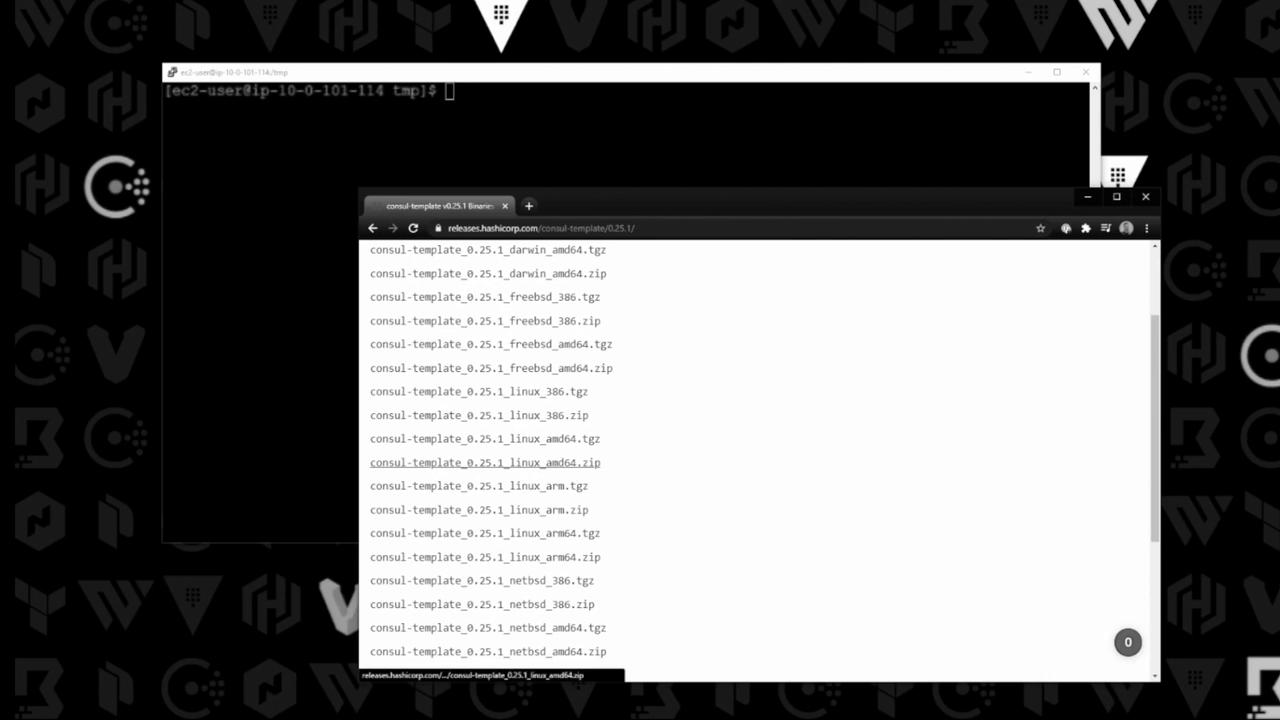HashiCorp Certified: Consul Associate Certification
Access the Consul KeyValue KV
Demo Using Consul Template to monitor Changes to Consul KV
title: "Using Consul Template to Monitor Changes in Consul K/V" description: "Step-by-step guide to pull dynamic configuration from Consul K/V store using Consul Template."
In this tutorial, you'll learn how to leverage Consul Template to dynamically fetch configuration values from a Consul K/V store and generate application configuration files automatically. This approach ensures your application configs stay in sync with the latest Consul K/V entries.
1. Populate Consul K/V Store
First, add the required key-value pairs for our eCommerce application. You can verify these entries in Consul UI or via CLI.
| Key | Value | Description |
|---|---|---|
| apps/eCommerce/version | 4.5 | Current application version |
| apps/eCommerce/environment | production | Deployment environment |
| apps/eCommerce/database_host | customer_db | Hostname of the customer database |
| apps/eCommerce/database | billing | Database name for billing service |
Run the following commands:
consul kv put apps/eCommerce/version 4.5
consul kv put apps/eCommerce/environment production
consul kv put apps/eCommerce/database_host customer_db
consul kv put apps/eCommerce/database billing
2. Download and Install Consul Template
Head over to the Consul Template releases page and copy the link for your platform.

Note
Make sure to choose the correct architecture (e.g., linux_amd64) from the release page.
Install and verify:
curl -sLo /tmp/consul-template.zip \
https://releases.hashicorp.com/consul-template/0.25.1/consul-template_0.25.1_linux_amd64.zip
unzip /tmp/consul-template.zip -d /tmp
sudo mv /tmp/consul-template /usr/local/bin/
consul-template -v
# Expected output: consul-template v0.25.1
3. Create a Template File
Define your template with placeholders that map to the Consul K/V keys:
cat << 'EOF' > config.json.tmpl
{
"environment": "{{ key "apps/eCommerce/environment" }}",
"version": "{{ key "apps/eCommerce/version" }}",
"database_host": "{{ key "apps/eCommerce/database_host" }}",
"database_name": "{{ key "apps/eCommerce/database" }}"
}
EOF
Each {{ key "..." }} snippet instructs Consul Template to fetch the corresponding value at render time.
4. Render the Template
Use the -once flag for a single render, or run without it to watch for changes:
consul-template -template "config.json.tmpl:config.json" -once
Warning
Using -once renders the file a single time and then exits. Remove -once to keep watching for updates.
Verify the output:
ls
cat config.json
{
"environment": "production",
"version": "4.5",
"database_host": "customer_db",
"database_name": "billing"
}
5. Next Steps
In production, run Consul Template as a service or sidecar to continuously monitor your K/V store. This ensures that any update in Consul is immediately reflected in your application’s configuration.
Links and References
Watch Video
Watch video content
Practice Lab
Practice lab